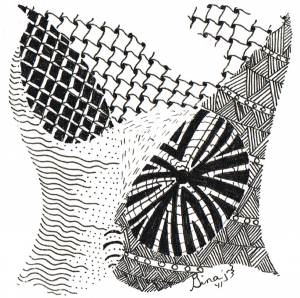
Over the course of several Tuesdays — Transition Tuesdays — I’m sharing one area of my practice that thrills me more than just about anything — coaching individuals with disabilities and their families as they transition from one life stage to another. Please note that while I’ll be describing a coaching scenario that is very similar to several families that I’ve worked with, it is an amalgamation of those conversations and is not based on any one family.
In Part I, I introduced you to Jon, Kate, and Dan and wrote a little about my approach to coaching families through the transition planning necessary to move students with disabilities from high school into an interdependent, adult life.
In Part II, I shared more about my role in working with Jon, Kate and Dan. I also talked some about what it means to be “humanistic” in coaching.
In Part III, I outlined the process and the steps I’m using to walk Jon and his parents through his transition. These steps form the structure for just about any coaching relationship.
In Part IV, we looked at the person-centered assessments I use during the Data Gathering portion of coaching a family through transition.
In Part V, we took a closer look at the PATH tool and discussed how delicious pie-in-the-sky dreaming can lead to some pretty delightful real-world results.
Today we’ll take a look at what happens after the PATH. As you may recall from Part III, now that we have some specific goals in place, the actual coaching begins!
Positive and Possible
Whether I use a PATH or some other method of goal setting and action planning with an individual and their circle, the reality is that pretty paper is truly only that. Pretty paper. The real work comes in creating a structure of implementation that is realistic and pointed forward. So, once the PATH or other planning process is completed, it is critical to take the lists of goals, action steps, and enrolled individuals willing to work toward those ends and put them into a format that lends itself to follow through.
Knowing this, I’ll work with Jon, Kate and Dan to put those plans into a grid that will keep everyone accountable to their promises. I’ll also make sure that whatever our “deliverables” are from the planning sessions are readily identifiable to Jon as his own. Sometimes that means including pictures or graphics in the documents. Sometimes it is printing it all on his favorite color of paper with his picture on the cover. The end result should be a set of documents that are Jon and family friendly, very usable, and which includes room for edits, annotations, and changes in the plan.
Coaching and Coordination
If the PATH identified needed resources or referrals – typically this involves financial planning, estate planning, accessing service systems offered through state and federal agencies, researching post-secondary options, locating support groups and leisure activity options, and connecting to the larger community – I will work with the family to locate those supports. It isn’t unusual for the family to collaborate with me over the course of several years – at times on a weekly basis, but typically transitioning to a quarterly conversation as needed for continued momentum and check-ins.
My role involves following up on promises, finding resources, encouraging forward momentum, and regularly checking the plan for applicability. In some cases, I’ve found it’s helpful to gather the circle together on a regular basis to check progress and update goals. In a long-term transition plan, such as Jon’s, it may even be necessary to facilitate a second PATH as he achieves his goals and as his interests continue to develop and change.
Removing the Bricks
The real payoff is when Jon takes a central role in directing the course of his own life. After years of waiting to be told by Kate and his teachers where to be and when to be there, he’s learning that he gets a real say in what he likes and how he wants his day to go. Kate is starting to relax a bit about having to be the one who knows all of the answers to questions about Jon. Now, Jon and Dan, along with other members of their circle, take on many of the tasks that Kate used to spend nights and weekends trying to stay ahead of. She expresses her relief most succinctly when she thanks me for “removing the bricks from her back.” I’m touched that she sees it this way, but the truth is that I didn’t actually remove anything; I just gave her permission to share the load.
Of course Jon sees it another way. “I like to be in charge and ask people for help. It’s better when they help me do stuff on my list because then we all get to be happy about it.”
In Part VII I’ll share a little about the ethical and multicultural considerations of coaching families through transitions.
For folks who like to know more, here are the references from this series:
Brouwer, P. J. (1964). The power to see ourselves. Harvard Business Review, 42(6), 156-165.
Helen Sanderson and Associates. (2007). Person centred thinking. Liberty, Missouri: HSA, USA.
Pearpoint, J., O’Brien, J., & Forest, M. (1993). PATH: Planning possible positive futures. Inclusion Press: Toronto.
Peterson, D. (1996). Executive coaching at work: The art of one-on-one change. Consulting Psychology Journal: Practice and Research, 48(2), 78-86.
Stern, L. (2004). Executive Coaching: A Working Definition. Consulting Psychology Journal: Practice and Research, 56(3), 154-162.
Stober, D. R. & Grant, A. M. (eds.) (2006). Evidence based coaching handbook: Putting the best practices to work for your clients. Hoboken, NJ: John Wiley & Sons, Inc.


your thoughts